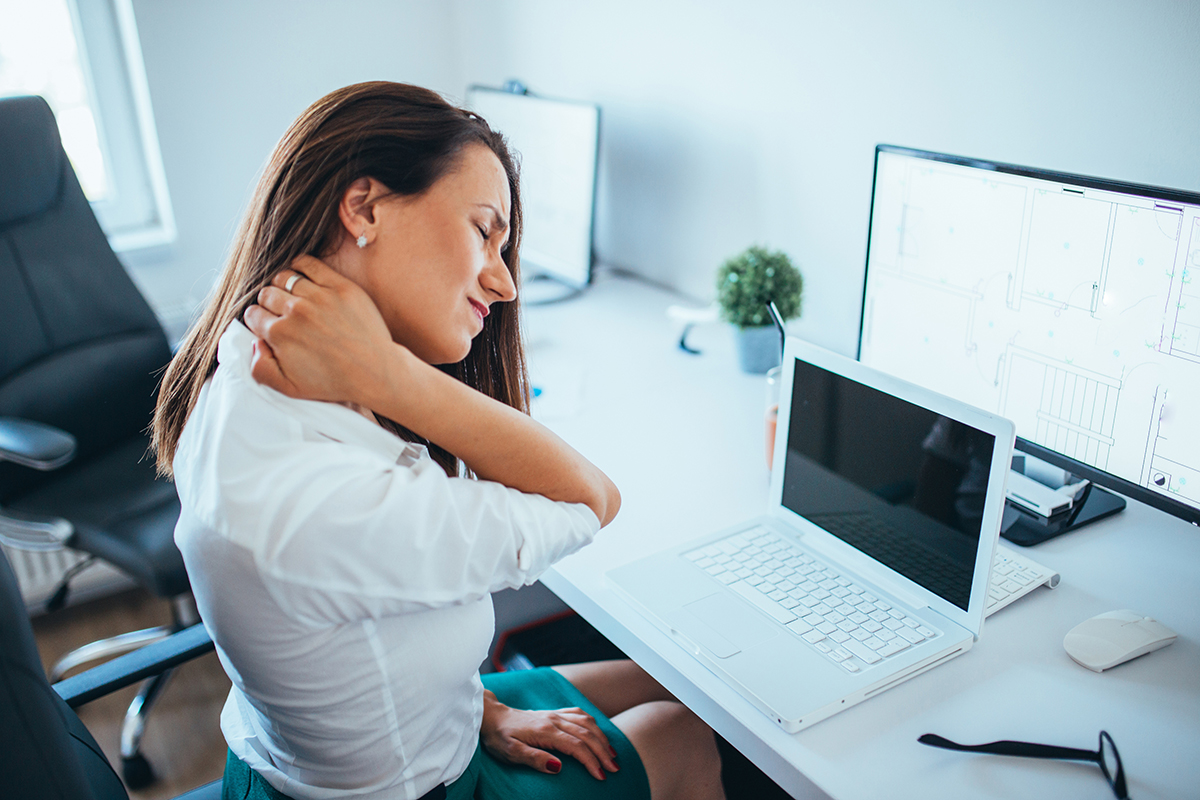Spending hours a day sitting at a desk while typing at a computer, grading papers, drawing up documents and answering phone calls can take its toll on your body. Slouching and stooping while standing and walking create their own set of problems that reaches farther than just looks. Poor posture really does affect more than just your appearance; it affects your overall health and wellbeing.
According to Harvard Medical School, good posture is important to maintaining good balance. When you’re standing and sitting properly, your weight is distributed correctly over your feet. This distribution becomes important for simple activities like walking and getting out of a chair, to more complex things like sports.
Besides basic balance, posture affects numerous health areas. 100% Chiropractics shares that poor posture can eventually change the natural curvature of your spine, limiting its ability to work as a shock absorber and creating pain. Chronic back pain and disc degeneration could be long-term results of the comfortable slump in your chair. WebMD shares that slouching at your desk causes your ribs to invade the space meant for your lungs, keeping your lungs and diaphragm from doing their job right.
The comfortable slouch you maintain as you sit at your desk could be the cause of your stomach problems as the digestive organs are compressed unnaturally. The compression may also cause your metabolism to slow down and keep you from properly processing what you eat. Letting your head push forward when looking at electronic devices or when you are standing and walking can push your jaw forward creating pain in your jaw. Varicose veins and spider veins can also be the result of poor posture while sitting. Even cardiovascular issues have been linked to poor posture, and knee pain may be the result of walking with a stoop at the waist.
On the flip side, good posture brings good results. Better balance, more energy, less stress and less fatigue are all great benefits of sitting up straight and standing tall. Knowing that the rewards are worth developing the self-discipline to have good posture, how can you tell if you need to work on yours?
Posture Checks
The Mayo Clinic offers three simple ways to check and see if you have good posture or not.
- Wall test. Stand with your back to the wall. Your head, shoulder blades and buttocks should all touch the wall and your feet need to be two to four inches away from the wall. Standing like this, you should be able to slide one hand, keeping it flat, behind the small of your back. If you have too much space, tighten your abs. If you don’t have enough space, arch your back until your hand fits. Maintain this position as you walk away. Throughout the day, go back to a wall and double-check your posture, making sure it’s still good.
- Mirror test. While looking in a mirror, you should see that your shoulders are straight, not slumped forward and down. Your neck and head should make a straight line from your back to the ceiling. If your shoulders are slumped, your head is probably sitting in front of the spine, forcing your neck to curve forward.
- Sitting test. With your feet sitting flat on the floor, check out your posture. You should have a gap between the seat and the back of your knees. Your upper back and neck should be comfortably straight, and your shoulders relaxed. Don’t allow them to round forward or pull up.
If you find you’re getting tense or stressed while sitting at your desk, Harvard Medical School recommends stretching your back and shoulder muscles. You can stretch one arm out and across the front of your body, grab it with the opposite arm and gently pull it in across your chest. Do that with both arms, stretching out your shoulders. You can also roll your shoulders back and squeeze the shoulder blades together and hold them for five seconds. Do this several times to help relax the muscles.
For a full upper body stretch, go to a corner of a wall, placing the palms of your hands at shoulder height on either side of the corner. Put one foot ahead of the other and lean into the corner. Keep your head up straight. Hold this position for 10 to 20 seconds and let the muscles stretch across your chest.
Improving your posture improves your overall health and well-being. It helps you look good, too. If you still find you’re having pain and discomfort, contact the specialists at Atlanta Brain and Spine Care today and see what they can do for you.



Add Comment